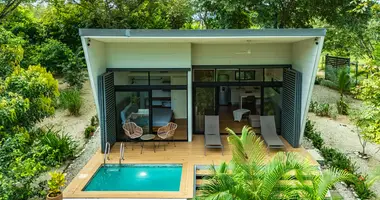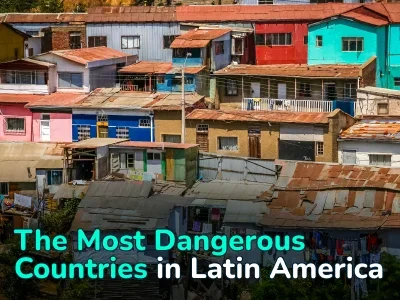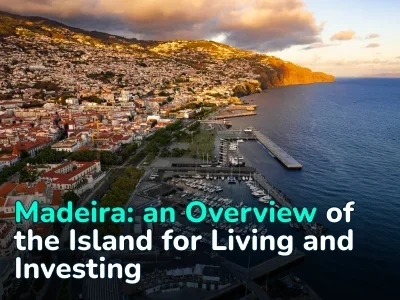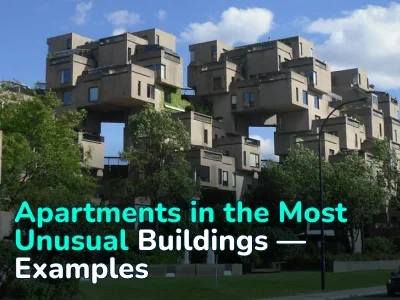
Living in Costa Rica: How to Get a Residence Permit, and How Much Does It Cost to Move There
Costa Rica consistently ranks among the most stable countries in Latin America due to its diversified economy. Alongside tourism, high-tech manufacturing and medical equipment production play a major role. More than 70 international companies operate in this sector.
This makes the country attractive to foreigners. As of 2022, approximately 500,000 foreign residents live in Costa Rica, mainly citizens of Spain, Germany, Italy, and France. According to a 2024 InterNations survey conducted among expats, Costa Rica placed first worldwide in overall expat satisfaction.
In this material, we explain what modern Costa Rica is like, why it attracts newcomers, and how relocation works.
Why Costa Rica is Attractive
Costa Rica shows a rare combination for Latin America: steady economic growth of about 3.5 percent annually and controlled inflation close to 7 percent. This reduces financial pressure on the cost of living, long-term investments, and the rental market.
Experts point to the complete abolition of the regular army as the main driver of development. The government directs the freed resources to the social sector, including education and healthcare.
The country operates a hybrid healthcare system. The public insurance program Caja covers basic medical services, while the developed private sector offers treatment at the level of U.S. hospitals.
For expats and digital nomads, there are international schools and well-developed fiber-optic internet. And, of course, the ocean. Costa Rica has access to both the Pacific and the Atlantic.
Pros and Cons of Living in Costa Rica
Costa Rica has many advantages. For example, it shows one of the highest levels of political stability in the region. However, these advantages inevitably come with drawbacks that should also be considered.
Pros of relocating to Costa Rica:
- Developed healthcare system. According to the Bloomberg Health-Care Efficiency Index (2023), Costa Rica ranks among the top three countries in Latin America in cost-to-quality efficiency. Foreigners can access medical services through international insurance policies.
- Environmental quality. Up to 98 percent of electricity is generated from renewable sources such as hydro, wind, and geothermal power. More than 25 percent of the country’s territory consists of national parks and protected reserves. This results in clean air and well-maintained beaches.
- High level of education. The literacy rate reaches 97.9 percent.
- Comfortable social environment. Foreigners note how easy it is to build social connections and that there is no cultural pressure.
Cons of living in Costa Rica:
- High cost of living. Groceries, household appliances, and cars are noticeably more expensive due to import duties. According to Numbeo, consumer prices are 15 to 30 percent higher compared to Panama or Mexico.
- Bureaucracy. Obtaining residency or opening a bank account can take months. A notary or attorney is required for most legal actions.
- Income below expenses. Average salaries generally range from 1,000 to 1,500 USD per month, depending on the sector. Foreigners who rely on local income often face budget limitations.
- Economic seasonality. In tourist areas, rental returns depend heavily on the season. During the low season, occupancy rates may drop to 40 percent.
Real Estate Market in Costa Rica
The real estate market in Costa Rica is expanding due to strong demand from foreign buyers. Foreigners can own property outright with a full title. The only exception is land located within 200 meters of the shoreline, as this coastal zone belongs to the municipality and can only be leased, not purchased.
Structure of the Costa Rican real estate market:
|
Region / Area |
Dominant property types |
|
Guanacaste (Pacific, Tamarindo / Flamingo / Coco) |
Oceanfront condos, villas with pools, resort developments, townhouses |
|
Central Valley (San José, Santa Ana, Escazú) |
High-rise premium condos, gated communities |
|
Caribbean Coast (Puerto Viejo, Cahuita) |
Small houses, eco-projects, boutique hotels |
|
Inland areas (Atenas, San Mateo, Grecia) |
Houses on large lots (1,000–5,000 m²), small villas |
Average property prices in Costa Rica by region:
|
Region / City |
Avg. price of condo (1–2 bedrooms) |
Avg. price of house/villa |
|
Santa Ana / Escazú (San José, Central Valley) |
160–250 thousand USD |
350–700 thousand USD |
|
Tamarindo / Flamingo (Guanacaste) |
220–350 thousand USD |
500 thousand–1.5 million USD |
|
Puerto Viejo (Caribbean Coast) |
Condos are rare |
120–220 thousand USD |
|
Atenas / Grecia (inland) |
— |
180–350 thousand USD |
Residential Real Estate Options for Purchase in Costa Rica
Taxes and Additional Expenses in Costa Rica
Property taxes in Costa Rica are low compared to Europe and North America. However, annual costs accumulate due to insurance (weather-related risks), maintenance, and HOA payments for condominium complexes.
Taxes and mandatory expenses:
|
Expense item |
Amount/Range |
Notes |
|
Property tax |
0.25 percent of assessed value |
Paid annually, applies to all properties |
|
Luxury property tax |
Applies from approx. 300,000 USD and up (progressive rate) |
Calculated separately based on construction value |
|
HOA (condos/developments) |
200–600 USD per month |
Fee for management and shared facilities |
|
Property insurance |
800–2,500 USD per year |
Higher in coastal regions due to climate risks |
|
Attorney + transaction costs |
1.25–2 percent of the property price |
Includes notary fees and title registration |
Cost of Living in Costa Rica
In terms of prices, Costa Rica is closer to the United States than to most Central American countries. The main reasons are high import VAT and logistics, since a large share of food and consumer goods is imported.
Because of this, the cost of a basic grocery basket is 15 to 30 percent higher than in Panama or Mexico. Rental prices in coastal cities with a large foreign population are comparable to South Florida. Living inland is more affordable, although the infrastructure is less developed.
Approximate monthly budget for a couple:
|
Expense category |
Central Valley |
Coast/tourist areas |
|
Rent (1–2 bedroom condo) |
900–1300 USD |
1500–2500 USD |
|
Groceries and household expenses |
500–650 USD |
650–800 USD |
|
Private health insurance |
120–250 USD |
120–250 USD |
|
Car + fuel |
250–350 USD |
300–450 USD |
|
Total |
2000–2700 USD |
3000–4200 USD |
Many U.S. residents choose Costa Rica for medical tourism. Even private surgeries cost 40 to 70 percent less than in the United States while maintaining comparable quality in international hospitals.
Immigration Options in Costa Rica
Costa Rica’s immigration system is structured around several clear programs designed for different profiles: retirees, investors, individuals with stable passive income, and remote workers.
Main relocation programs:
|
Category |
Requirements |
Key details |
|
Pensionado (retiree residency) |
Minimum lifetime pension of 1000 USD per month from a government or private pension system. |
Employment in the local labor market is not permitted until permanent residency is obtained. |
|
Rentista (income from assets / guaranteed income) |
Proof of stable income from investments or savings, for example, 2500 USD per month for at least two years. |
Can include spouse and children. Not allowed to work for local companies. |
|
Inversionista (investor residency) |
Investment of at least 150,000 USD (in some cases 100,000 USD) in real estate, a business, or a project. |
After a defined term, the applicant can qualify for permanent residency. |
|
Digital Nomad Visa |
Income from outside the country of at least 3000 USD per month (or 4000 USD per month for families). |
The visa is issued for one year and may be extended for an additional year. Does not lead directly to permanent residency. |
Initial temporary residency applications are submitted through a consulate or directly to the immigration authorities. After three years of living in the country with temporary residency, an applicant may apply for permanent residency.
To qualify for citizenship, a permanent resident must live in Costa Rica for at least seven years (five years for nationals of Spain and Central American countries). Citizenship is also available through marriage to a Costa Rican citizen; in that case, naturalization can be requested after two years of living together in marriage. Costa Rica allows dual citizenship, so applicants do not have to renounce their original passport.
Popular Cities for Relocation to Costa Rica
Costa Rica is a relatively compact country, yet living conditions and investment potential vary significantly between regions. The main differences are the level of infrastructure and the type of demand. The Central Valley is located at an equal distance from both coasts and is better suited for permanent living, since prices there do not fluctuate with tourist seasons.
Popular areas of Costa Rica:
- Central Valley (San José, Santa Ana, Escazú). This is the administrative and economic center of the country, with many private clinics, international schools, and business districts. Government institutions and offices of major multinational companies are located here. The climate remains around 22—27°C year-round, humidity is lower, and tropical storms are less frequent. The region is well-suited for those planning a permanent move.
- Guanacaste (Tamarindo, Flamingo, Coco). Guanacaste is the main tourist zone. Most beaches and related infrastructure are concentrated here. Construction focuses on condominiums, oceanfront homes, and properties intended for short-term rentals.
- Caribbean Coast (Puerto Viejo and surrounding areas). This coast is oriented toward houses with large land plots, eco-projects, and bungalows. Infrastructure is simpler than on the Pacific coast: fewer supermarkets and medical centers, and a higher dependence on weather, as Atlantic hurricanes reach this area more often.
- Inland areas (Atenas, Grecia, San Mateo). These regions are quieter both in terms of climate and tourism. Infrastructure is moderate but improving due to proximity to San José. Many properties here are houses on sizable lots, oriented toward year-round living.
Frequently Asked Questions About Costa Rica
Can a foreigner own property in Costa Rica?
Foreigners have the same ownership rights as citizens. The only restriction applies to the first coastal zone within 200 meters from the water. This land belongs to the state and can only be leased from the municipality.
What is the minimum budget for a couple to live comfortably?
In the Central Valley, average monthly expenses for a couple are 2000–2700 USD. On the coast, the budget increases to 3000–4200 USD due to higher housing, groceries, and service costs.
How long does it take to obtain residency and citizenship?
Temporary residency can be issued within a few months, with most time spent on document preparation. After three years of living in the country as a temporary resident, a person can apply for permanent residency. After seven years of living with permanent residency, citizenship becomes available.
Author
I write informative articles about real estate, investments, job opportunities, taxes, etc.


























